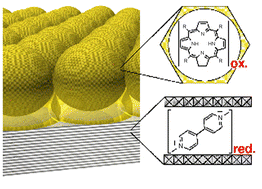Photochemical electron transfer though the interface of hybrid films of titania nano-sheets and mono-dispersed spherical mesoporous silica particles
Abstract
Photochemical

* Corresponding authors
a
Department of Crystalline Materials Science, Graduate School of Engineering, Nagoya University, Chikusa-ku, Nagoya, Japan
E-mail:
ttt_yui@mac.com
b Toyota Central R & D Labs Inc., Yokomichi, Nagakute, Aichi, Japan
c
CREST (JST)
E-mail:
ktakagi@apchem.nagoya-u.ac.jp
d Department of Applied Chemistry, Tokyo Metropolitan University, Minami-ohsawa, Hachiohji, Tokyo, Japan
Photochemical

 Please wait while we load your content...
Something went wrong. Try again?
Please wait while we load your content...
Something went wrong. Try again?
T. Yui, Y. Kobayashi, Y. Yamada, T. Tsuchino, K. Yano, T. Kajino, Y. Fukushima, T. Torimoto, H. Inoue and K. Takagi, Phys. Chem. Chem. Phys., 2006, 8, 4585 DOI: 10.1039/B609779K
To request permission to reproduce material from this article, please go to the Copyright Clearance Center request page.
If you are an author contributing to an RSC publication, you do not need to request permission provided correct acknowledgement is given.
If you are the author of this article, you do not need to request permission to reproduce figures and diagrams provided correct acknowledgement is given. If you want to reproduce the whole article in a third-party publication (excluding your thesis/dissertation for which permission is not required) please go to the Copyright Clearance Center request page.
Read more about how to correctly acknowledge RSC content.
 Fetching data from CrossRef.
Fetching data from CrossRef.
This may take some time to load.
Loading related content
